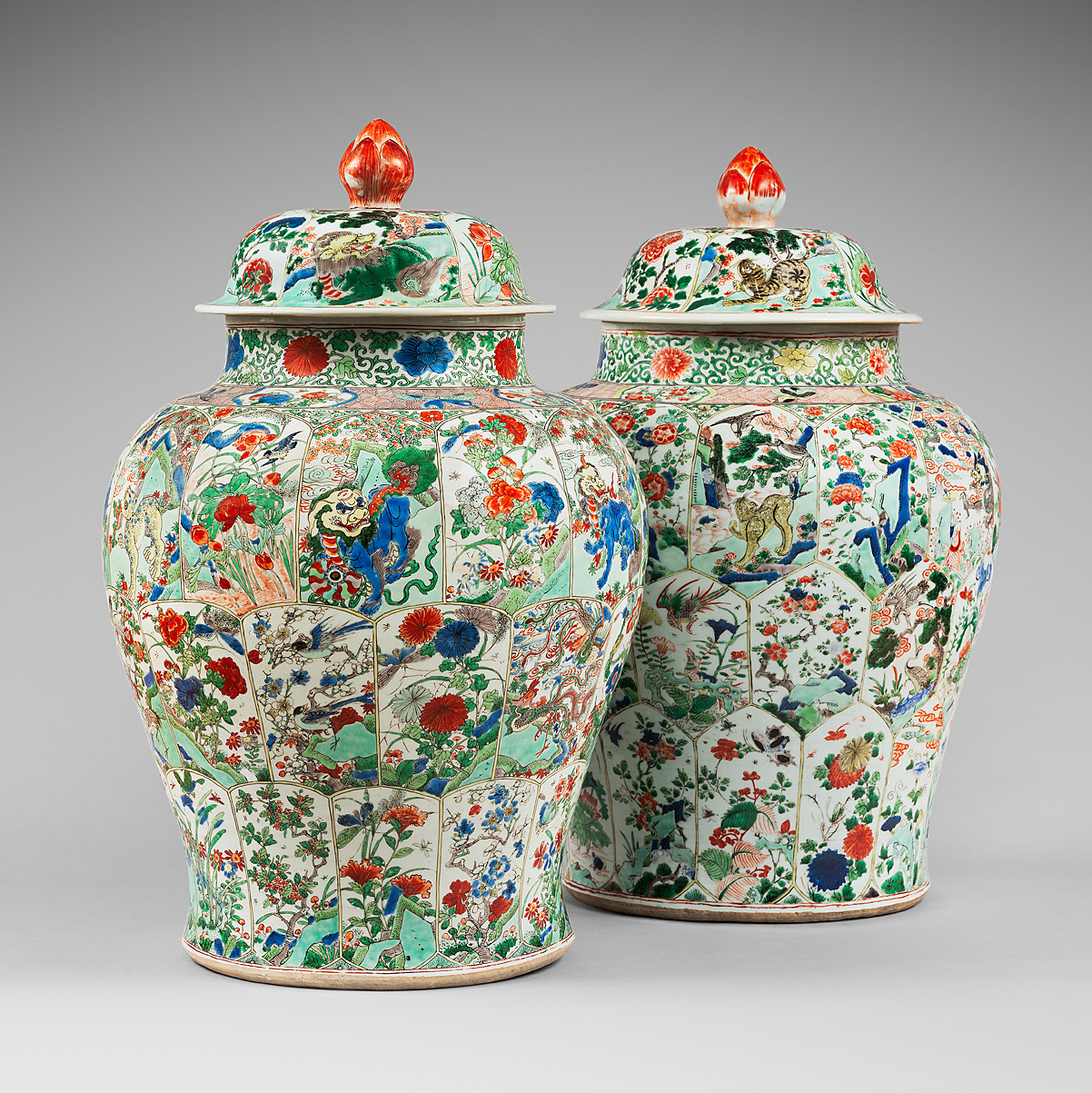The baluster-shaped large jars decorated in the famille verte palette have domed covers with a finial in the form of a bud and a short, wide, slightly tapered neck with everted round rim. The body of each vase is covered in rich translucent enamels: several shades of green, iron-red, bright blue, yellow, aubergine and black
Both jars are completely covered by three overlapping rows of interconnected petal-shaped panels decorated with a profusion of different flowers and blooming trees. Interspersed among them are mystical beasts such as the qilin, the phoenix, the dragon and the carp, alternate with tigers, deer, cranes and a variety of birds and insects. All these creatures inhabit the mythological realm of the Daoist immortal Xi Wangmu. Vases with such an intricate and elaborate decoration would be meant as a wish for a long life. On the shoulder, between the panels and the base of the neck, there is a frieze of trellises intertwined with butterflies and cartouches of lotus. The neck is decorated with chrysanthemum blossoms.
The depiction of panels each containing a different scene is a traditional decoration dating back the Ming dynasty (1368-1644). It became widespread during the Kangxi period (1662-1722).
